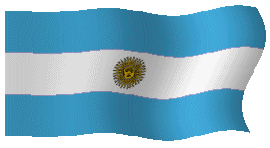
B"H
Jewish  Tours
Tours
 Buenos Aires, Argentina
Buenos Aires, Argentina
In the 1920s and 1930s, having settled in a few cities and because of their economic, social, and cultural activities, the Jews became one of the "most visible" groups of immigrants in the words of the historian Jeffrey H. Lesser. Thus, they came to be the object of local, national, and international gambling interests, of stereotypes, and of political intrigue, "pawns of the powerful," especially during the Vargas regime (1930–45), when "the Jewish question" was raised in the country, involving political interests.
In 1930 the "First Republic" came to an end and a
revolution brought Getúlio Vargas to power with a nationalist government
Nevertheless, Jewish immigration, mainly from Nazi-dominated Europe, continued individually by a variety of means, mainly case by case negotiations, but never organized through charitable organizations. From time to time, special provisions were made for the immigration of people skilled in certain fields or relatives of Brazilian citizens. The law also made it possible for the authorities to accord to tourists the status of permanent residents. Some 17,500 Jews entered Brazil between 1933 and 1939 (until 1945 an additional 6,000 entered), but many refugees from occupied Europe had their visa applications denied. During this time, some diplomats tried to act sympathetically towards the Jews; among them were Luiz Martins de Souza Dantas and Aracy Carvalho de Guimarães Rosa.
During the years of the Estado-Novo (1937–1945) and World War II, a general climate of xenophobia was present in government circles and in sectors of the political elite and among intellectuals. At least two militant Jewish Communist women were deported by Vargas' political police to Germany and handed over to the Gestapo: Jenny Gleizer and Olga Benário, wife of Luis Carlos Prestes, the most important Brazilian Communist leader, having led a Communist revolt in the country in 1935. The teaching of foreign languages and publication of newspapers in foreign languages were prohibited and immigrant organizations had to "nationalize" their names and to elect boards of directors with native-born Brazilians. As a rule, these restrictions were imposed on all immigrant groups and not exclusively on Jewish immigrants, affecting the Italians and hitting the Japanese hard (who were deported from São Paulo and Santos to the interior of the state).
Despite the dictatorship and the climate of nationalistic xenophobia, the Jewish organizations adjusted to the legislation and learned how to deal with the restrictions so as to continue operating. The schools continued to teach Hebrew and Jewish culture, the synagogues kept up their services, radio programs played Jewish music, and innumerable organizations were established during this period (including the Associação Religiosa Israelita – ARI, founded by German Jewish refugees in 1942 in Rio de Janeiro, with around 1,000 members) resulting in a very fertile period for the organizations of the Jewish community. The German Jews were the ones who became most alarmed, especially after Brazil broke off relations with Germany and Italy in 1942, but their organizations operated as usual during the war years.
During the Estado-Novo and especially in the war years, there are no records of any forcible closure of Jewish organizations in São Paulo, then the biggest Jewish community. The antisemitism which was present in governmental and intellectual circles, among diplomats and the elite, did not result in criminal actions against the Jews living in Brazil and those who managed to evade the immigration barriers. Daily Jewish life followed its normal course, in spite of the restrictions in immigration and the antisemitic rhetoric in official circles.
In São Paulo and Rio de Janeiro the communities took part in campaigns in support of the war effort by Brazil, which broke off relations with the Axis powers in August of 1942 and followed a policy of alignment with the United States and the Allies. The Jewish community of Brazil donated five airplanes to the newly created Brazilian Air Force, in 1942, and formed several committees to help refugees of the war in Europe, some of which were linked to the Red Cross. In July 1944 Brazil sent the Força Expedicionária Brasileira (FEB) to Italy, consisting of over 30,000 men, who fought together with the U.S. Army in Northern Italy, participating in the victorious battle of Monte Castello. Jews were part of the FEB. Among them were the artist Carlos Scliar, who later published an Álbum de Guerra (Album of War), and Boris Schnaiderman, who published Guerra em Surdina, an eyewitness novel about the FEB.
Also during the war, several campaigns were undertaken to help the refugees in Europe. With the restriction on imports and the naval blockade, there was significant industrial and technical development in the great urban centers, in order to supply goods that had previously been imported. This created jobs for the inhabitants of the cities, among them the Jewish immigrants who had technical, commercial, and industrial skills.
Between 1933 and 1938 the Ação Brasileira Integralista (AIB)
Fascist movement was active in Brazil, led by Plínio Salgado, Gustavo Barroso,
and Miguel Reale. Inspired by European and South American Fascism, Integralismo
had an antisemitic platform. Gustavo Barroso, the head of the militia, was the
main antisemitic spokesman. He translated into Portuguese The Protocols of
the Elders of Zion, and published adaptations of the book for the Brazilian
public, such as A Sinagoga Paulista; Brasil, colônia de banqueiros; História
secreta do Brasil, and others. Gustavo Barroso ran the column
"International Judaism" in the main Integralist newspaper. He was also
the author of about 80 books, a member and
|
Visite nuestro sitio/Visit our home page: |